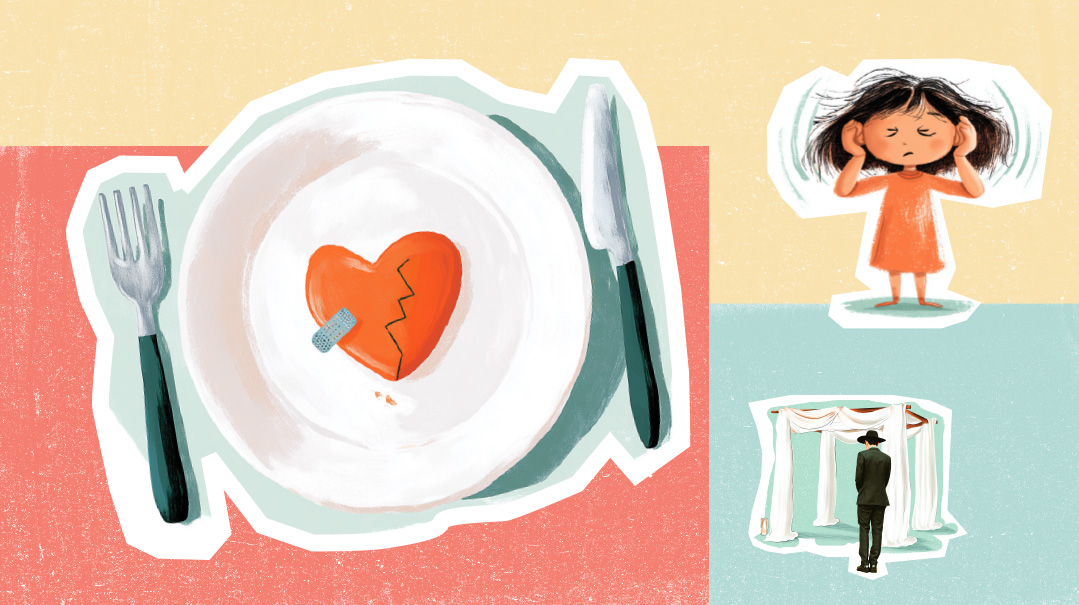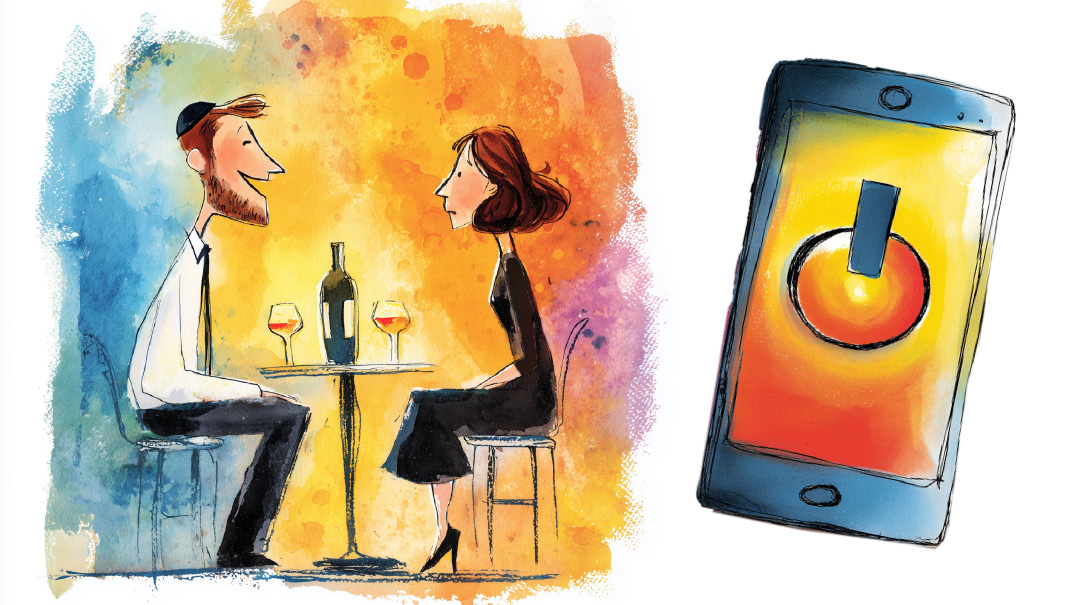Shedding Childhood Beliefs
| June 10, 2025The root of emotional eating runs deep

Shedding Childhood Beliefs
The root of emotional eating runs deep
Shira Savit
E
motional eating is often linked to stress — busy schedules, overwhelming days, or heightened emotions. However, the roots of emotional eating often run even deeper, connected to beliefs we formed in childhood about food, body image, and self-worth. These beliefs can shape our relationship with food as adults, often without us realizing it.
As children, we absorbed messages about food from parents, caregivers, and peers. It isn’t axiomatic; not everyone who heard these messages growing up necessarily develops an unhealthy relationship with food. The effects of these messages can vary widely, depending on personality, family dynamics, and the emotional context in which they were received.
Children who were praised repeatedly for being “a good eater,” may come to link eating with approval or affection. As adults, we may carry this association with us, turning to food for comfort or validation when we feel stressed or unappreciated. We’re not eating because we’re hungry; we’re eating because we learned that food makes us feel “good” or “worthy.”
Another common message is “Finish what’s on your plate.” This encourages children to ignore their body’s natural hunger cues and follow external rules about eating. When we carry this habit into adulthood, we may not notice when we’re truly full or hungry.
Food is also often tied to behavior in childhood, with desserts or treats used as rewards or withheld as punishments (e.g., “No dessert if you don’t behave.”) This teaches us to see certain foods as something we need to “earn” rather than something we can enjoy without guilt. When we indulge in these “earned” foods as adults, we may feel guilt or shame, leading us to eat emotionally as a way of soothing these negative feelings.
Similarly, labeling foods as “bad” or “junk” can create shame around eating them. This can lead to a cycle where we crave these foods but feel guilty for eating them, which in turn fuels emotional eating.
Identifying these old messages is the first step toward change. If you crave sweets after a difficult day, it may help to pause and ask, “Is this a response to my current stress, or is it a pattern from childhood?” Awareness can help us separate present-day emotions from old beliefs.
The next step is reframing our thoughts. Instead of trying to control emotional eating with willpower or self-blame, we can begin shifting our mindset. Remind yourself, “I don’t need to finish everything on my plate to be good,” or “I can enjoy dessert without needing to justify it.” These small mental shifts help disconnect food from feelings of guilt and self-worth and allow us to respond to current needs rather than past patterns.
As we practice tuning into our body’s natural hunger and fullness cues, we learn to distinguish between genuine hunger and old emotional patterns. Healing takes time and self-compassion, but each small shift helps us create a healthier relationship with food. Over time, we can let our adult selves lead, making nourishing choices that support who we are today.
Shira Savit, MA, MHC, INHC is a mental health counselor and integrative nutritionist who specializes in emotional eating, binge eating, and somatic nutrition. Shira works both virtually and in person in Jerusalem.
Ear Traffic
Dr. Jennie Berkovich
E
ar infections are one of those things that almost every parent faces at some point — especially when kids are little — and they aren’t fun.
Most ear infections in kids are middle ear infections (officially, otitis media). They usually happen after the child has had a cold or runny nose — anything that causes congestion. This congestion can build up in the eustachian tubes (tiny channels that connect the middle ear to the back of the throat), causing the tubes to get swollen or blocked as fluids pool there, creating a warm, damp environment — exactly what bacteria and viruses love. Infection sets in, causing pain, pressure, sometimes a fever, and even temporary hearing issues. Thankfully, permanent hearing damage is rare.
Children are more susceptible to ear infections than adults, as their eustachian tubes are shorter and horizontal, which makes it easier for fluid to get trapped. Other things that raise the risk include being around a lot of other kids (like in daycare), bottle feeding while lying down, exposure to cigarette smoke, and seasonal allergies.
Another common misunderstanding is that swimming causes most ear infections. “Swimmer’s ear” is an outer ear infection, while the middle ear infections we usually see in kids are tied to colds and other respiratory illnesses.
Many infections, particularly the ones caused by viruses, clear up on their own without any medication. In fact, overusing antibiotics can lead to resistance, making future infections harder to treat.
Garlic, with its natural antibacterial properties, has been a go-to home remedy for generations. But putting garlic or garlic oil directly into the ear isn’t recommended — it can cause irritation, allergic reactions, and even make things worse if the eardrum is damaged. Sometimes, it’s difficult for doctors to see inside the eardrum after drops have been used, making the diagnosis challenging. Safer ways to ease mild ear pain at home include using a warm compress, keeping your child hydrated, and giving appropriate pain relief (like acetaminophen or ibuprofen).
If the pain is severe, your child has a fever, or things aren’t improving in a couple of days, it may be time for antibiotics.
Dr. Jennie Berkovich is a board-certified pediatrician in Chicago and serves as the Director of Education for the Jewish Orthodox Women’s Medical Association. (JOWMA)
Marriage Means More
Rachel Burnham with Bassie Gruen
“Yeah, right now, she’s often moody and sad, but that’s probably just because she’s single. I’m sure once we’re married, she’ll change.”
Every time I hear a line like that, I cringe. Too often, we hold on to the fantasy that marriage, like some magic wand, will change people’s core personality.
That’s not how it works. Whatever you see while dating, you’ll see a lot more of once you’re married.
If the person you’re dating is kind and upbeat, when you get married, there will be lots more of that. And if she’s morose and moody, no, marriage will not suddenly transform her — you’ll be seeing a lot more of that.
Don’t commit unless you like what you see now, because it will be multiplied in the future.
Rachel Burnham is a dating coach and speaker. After marrying at 34, she dedicated herself to helping singles date from their most authentic selves, navigate singlehood with dignity, and make it proudly to the finish line.
(Originally featured in Family First, Issue 947)
Oops! We could not locate your form.







